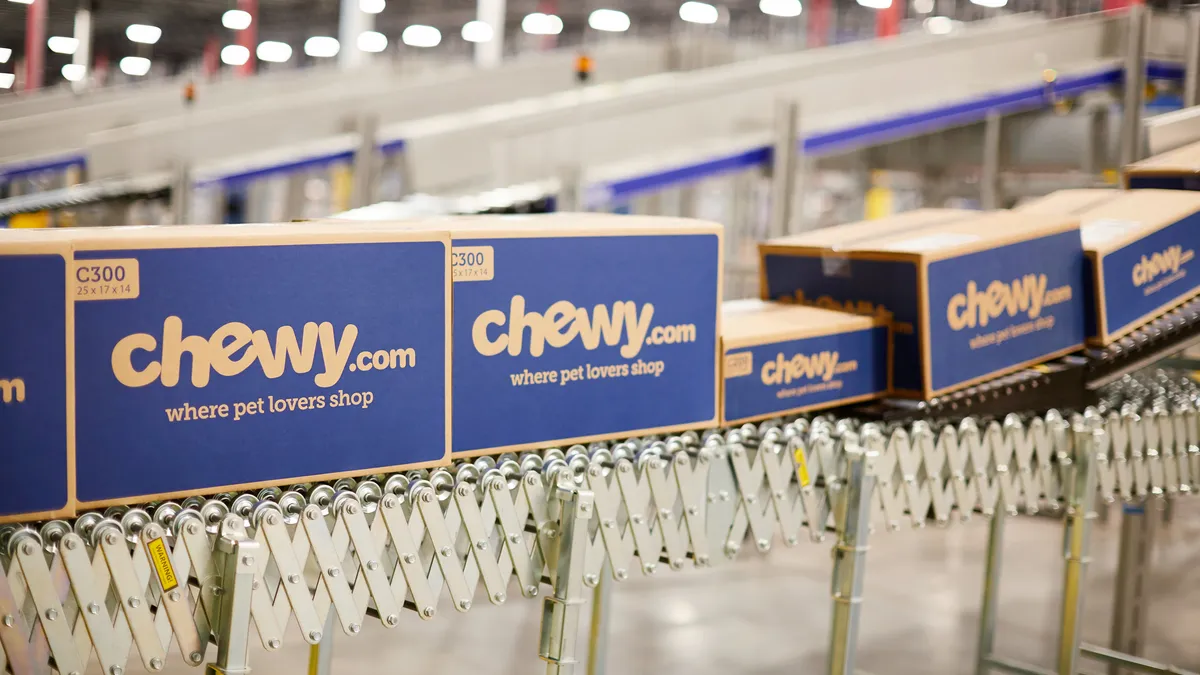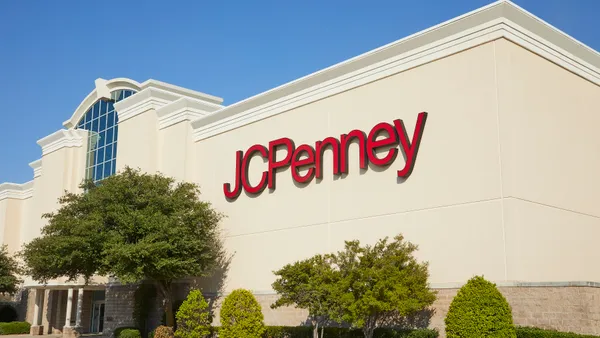Dive Brief:
- Chewy will expand its automated fulfillment network to shorten shipping distances and save on costs, CEO Sumit Singh said during a Dec. 8 earnings call.
- Roughly 30% of the pet goods retailer’s Q3 volumes were shipped from an automated fulfillment center, up from 10% during the same period last year, Singh told investors.
- The facilities have helped reduce average shipping distances by 25% in addition to lowering overall costs-per-order. Chewy plans to launch two additional automated fulfillment centers within the next 12 to 15 months, the CEO said.
Dive Insight:
Chewy has been taking meaningful strides in its supply chain transformation in a bid to mitigate freight costs, with the automated fulfillment centers not only lowering expenses, but expanding shipping capacity, Singh told investors earlier this month.
In a bid to reshape its fulfillment operations, the pet supply retailer opened its first automated fulfillment center in Archbald, Pennsylvania, in October 2020. Since then, Chewy has established two more fulfillment centers, with the most recent opening in Reno, Nevada, during Q2.
Volumes filled out of the two automated centers was roughly 18% to 20% cheaper than the volume filled from the retailer’s legacy network, Singh told investors. “We’re still ramping volume into the third fulfillment center, so there is incremental volume leverage that we expect to gain, and we’re still continuing to scale our costs.”
Looking forward, Chewy is investing in two more automated fulfillment facilities, with one to begin operations in 2023 and the other towards the end of next year or early 2024, the CEO told investors.
The pet supply retailer has also been leveraging automation efforts in other ways. For instance, Chewy utilized enhanced software and planning capabilities to improve in-stock inventory levels across its network in Q3, according to Singh.
“These efforts have been complemented by our middle-mile initiative, which also cuts average shipping distance and reduces costs,” he said.
Singh also noted that the company’s two new import routing facilities are on pace to handle 90% of Chewy’s import volume by year end, enhancing the retailer’s ability to “optimize inventory distribution across our FC network and reduce inbound freight costs.”
Collectively, Chewy’s supply chain and logistics efforts have enabled the retailer to navigate freight costs, Singh added.















